Horseshoe crabs are “living fossils” meaning they have existed nearly unchanged…nearly identical to their ancient relatives…for at least 445 million years, well before even dinosaurs existed. Horseshoe crabs are not actually crabs at all, they are much more closely related to spiders and other arachnids than they are to crabs or lobsters!”
https://myfwc.com/research/saltwater/crustaceans/horseshoe-crabs/facts/#:~:text=Horseshoe%20crabs%20are%20%E2%80%9Cliving%20fossils,are%20to%20crabs%20or%20lobsters!
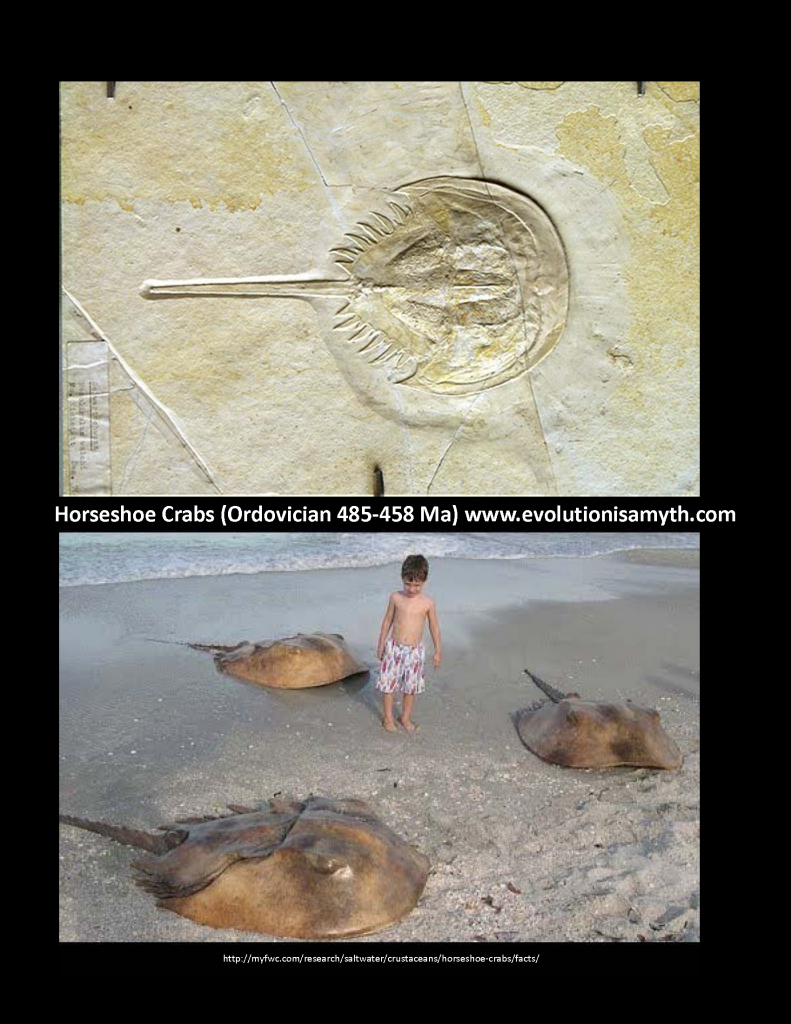
The nautilus and the ammonite have vastly similar anatomical features, which would normally suffice well for taxonomic categorization standards, but other organisms needed an ancestor like octopus, cuttlefish, and squid, therefore, nautilus cannot be ammonites. However, ammonites are considered extinct since the late Jurrasic. Both are aquatic mollusks with spiral shells, and both belong to a group called cephalopods. Ammonite fossils had 26 chambers, while modern nautiluses had 30 otherwise, aside from the massive sizes ammonites reached, they are very similar but by modern categorizations are not the same organism.
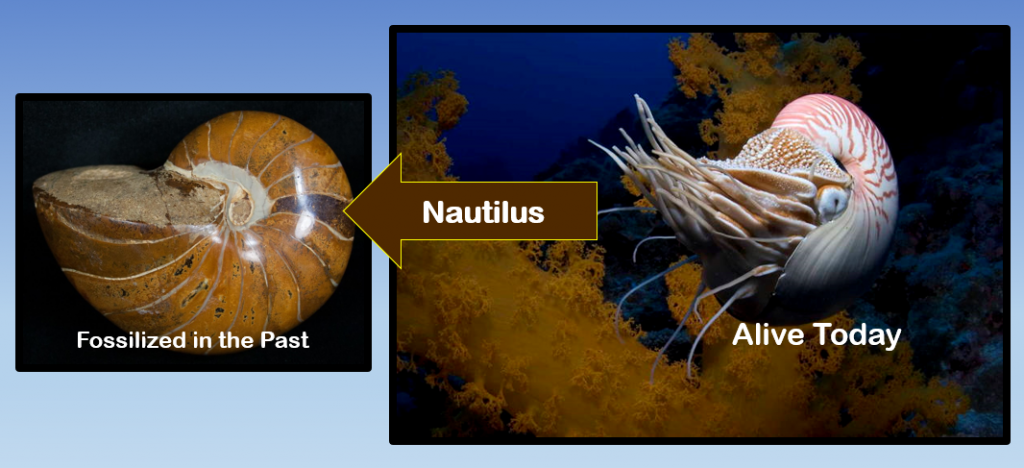
Nautiluses are a living link to the ancient past. They’ve been around over 480 million years, cruising deep ocean reefs even before the time of dinosaurs.”
https://www.montereybayaquarium.org/animals/animals-a-to-z/chambered-nautilus
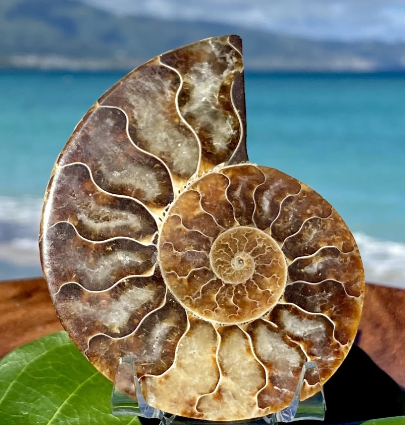
The modern consensus teaches that nautilus never went extinct; however, when the dinosaurs went extinct, so did the ammonites. Ammonites are theorized to have “transmutated” into modern cuttlefish, squid, and octopus. All these claims are made without a single transitionary fossil form of significance. You have a branch with an ammonite on one side and an octopus on the other. Seeing dinosaurs “evolved” into modern birds, supposing ammonites became cuttlefish, squid, and octopus is easier to imagine. However, the rationale behind such stretches of macro-evolution is primarily conjecture.
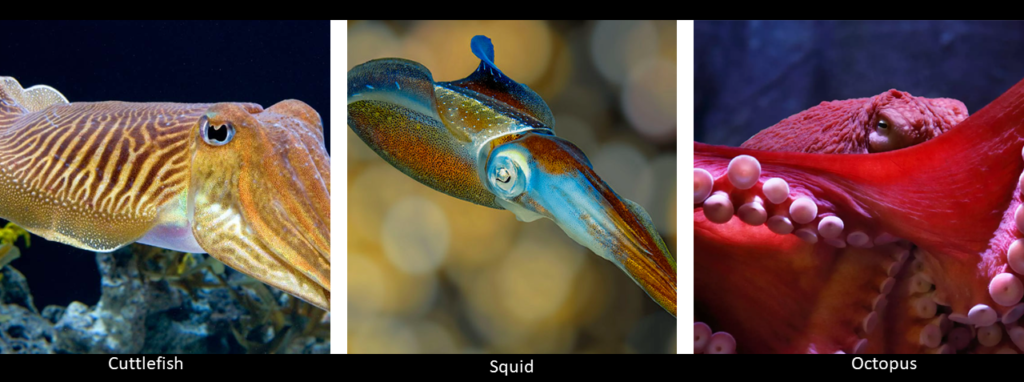
As revealed by fossils, life has remained relatively unchanged (in stasis) for many millions of years. Based on fossil evidence, thousands of common animals are found, such as fish, crabs, shrimp, clams, squid, starfish, sea lilies, crocodiles, snakes, turtles, sharks, and many more. These animals are notably alive and well and have primarily similar ancestors in fossils too! Of course, a handful of species, like the trilobites and dinosaurs. Although lizards remain abundant and trilobites have many relatives alive such as isopods.
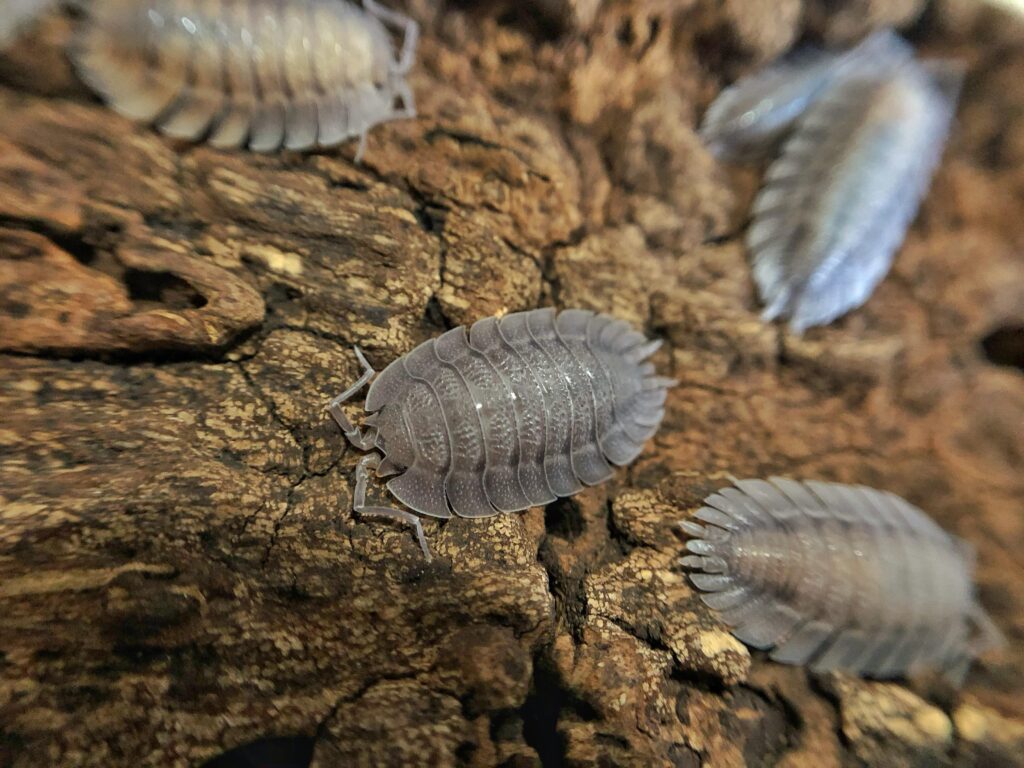
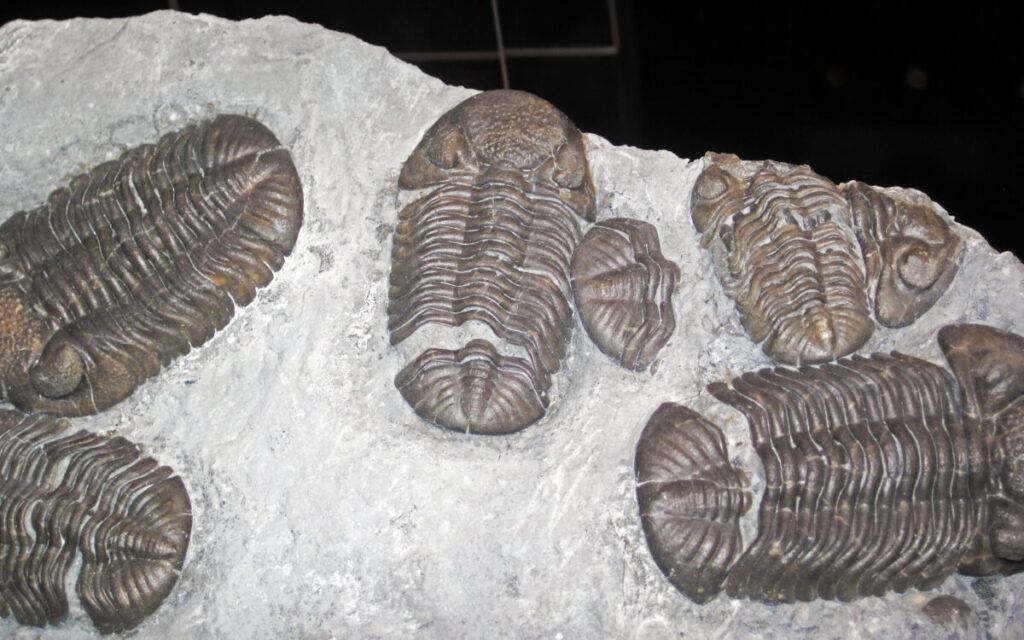
So what are “living fossils technically?”
Naturalistic criteria for “living fossils” as a scientific concept or criteria used to designate living fossils: Prolonged geological duration (found in many layers of geologic 'time'), Slow 'evolutionary' change (speciation only), Gross similarity to an ancestral fossil (little to no change over presumed vast periods), Very low taxonomic richness today compared to the past (vastly similar- in "stasis"), Relic geographic range compared to the past (animal still lives in the same area where fossils are found), Phylogenetic (species unique diversification) inference of specific characters as plesiomorphic ('primitive' extraordinary diversification), Phylogenetic inference of a genealogical divergence between other groups that diverged (assumed and not necessarily observed in the fossil record) in the supposed distant past. Note: 'quotations' and (parenthesis) are mine--these are the naturalistic classification guidelines for which specimens directly can be called a "living fossil."
Our claim that 99% of all “organisms” remain alive today as “living fossils” does not match consensus demarcations of Naturalists (as defined above) within modern evolutionary presumptions. We are talking about animal “kinds,” not species!
Complicated scientific names for ordinary animal kinds
The naming for various fossilized animals, like the categorizations for Taxonomic categories from Kingdom to Species, is Latin. Unfortunately, most people do not speak or read Latin, so these names sound mysterious and complicated. Still, they are merely exotic-sounding compound names for ordinary animals a kindergartner could name.
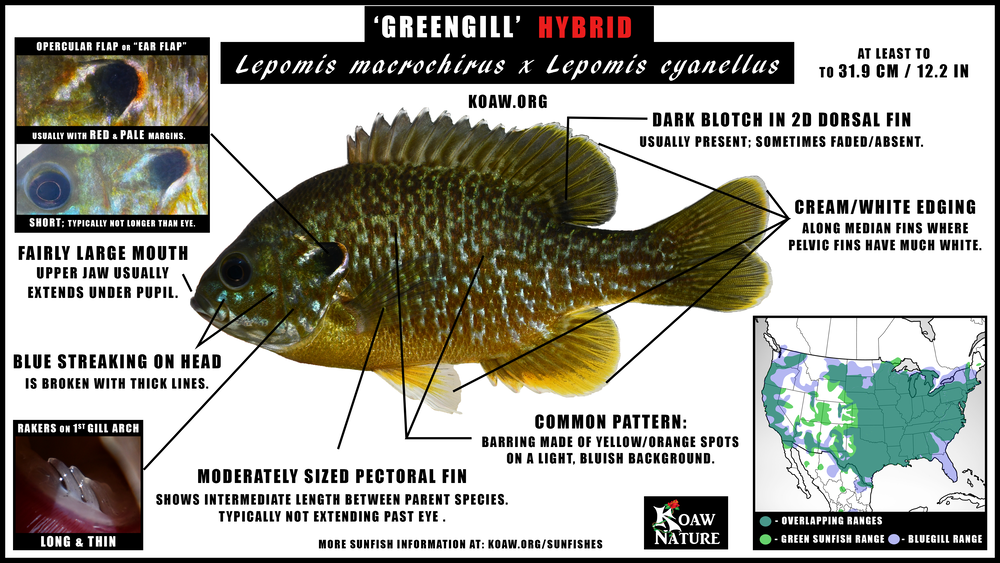
Source: Greengill (Lepomis cyanellus x Lepomis macrochirus) — Koaw Nature
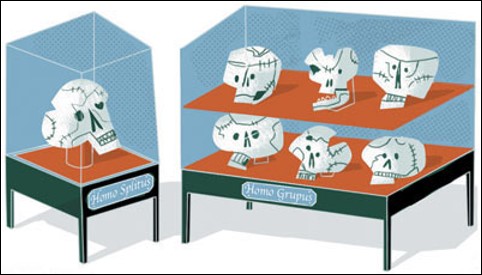
Notice how detailed scientists are about the delicate arrangements and subtleties of the shape and size of fins, jaw, head, and patterns all used to distinguish, not that it is just a sunfish, but that it is a “hybrid” species. Such delicate differences are used to claim discoveries of new species in fossils. This means that the total number of living species in the fossils is likely exaggerated. (See image of Lumpers and Splitters). However, if this animal turned on a fishing pole, it would be just a sunfish. If a paleontologist found it, they might examine it under a microscope or x-ray machine to determine any subtle differences so they might find a new undiscovered species within the centrachidae family. New species discoveries ensure future funding, a book deal, revenue, and potential fame, especially for humans, apes (considered “pre-humans”), and dinosaurs.
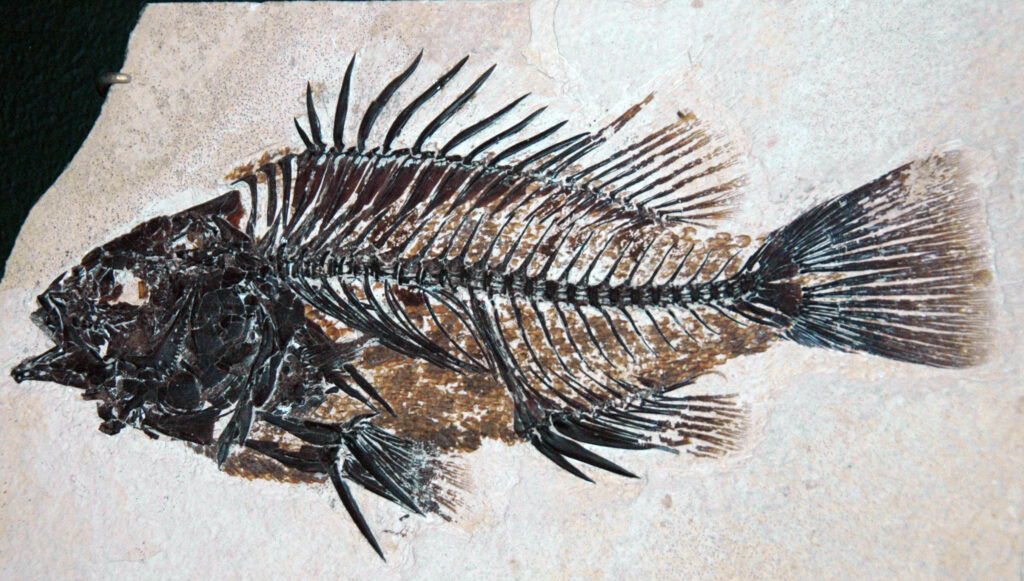
Naturalists will argue that the fossilized sunfish pictured above is today completely extinct at the species level –but clearly, we still have sunfish! These examples persist throughout all the organisms found as fossils and also alive. So, next time you read a long scientific name of a seemingly mysterious fossil like a marine shell named “Inoceramus,” Google it because it is just a clam.
The "Lepomis macrochirus x Lepomis cyanellus" was a sunfish.
There is nothing wrong or incorrect about using specific naming criteria or Latin because scientific accuracy is vital. However, simply mentioning a common name would clarify. Try looking up fossil names sometime and find long mysterious-sounding Latin names for seemingly ordinary organisms and animals. Perhaps the museum would rather not say the fossil is a sunfish– sounds too ordinary and does not align with the theme of the facility of millions of years of evolution.
“Living fossils” (the way we mean it here) is by the animal –not the species!
Here is how to determine a “living fossil” based on “kind” or “type.”
Look at the image of the fossil– does it looks familiar? If not, look up its scientific name. Now, is that kind of animal still alive today? Outside the handful of the favorites mentioned earlier, like trilobites, ammonites, and dinosaurs–I bet it is! Also, arguably exceedingly similar animal kinds to these are still alive too!
Sure, the delicate modifications carefully examined by scientists in determining species are caused by normal gamete reproduction, not mutations. Is the animal alive: yes or no? I have found that with only a few exceptions of extinct species, the answer is probably yes- they are still alive!
Naturalists point out that trilobites are extinct (which perhaps they are) but find different species emerging and then going extinct throughout the fossil record. But they are still trilobites!
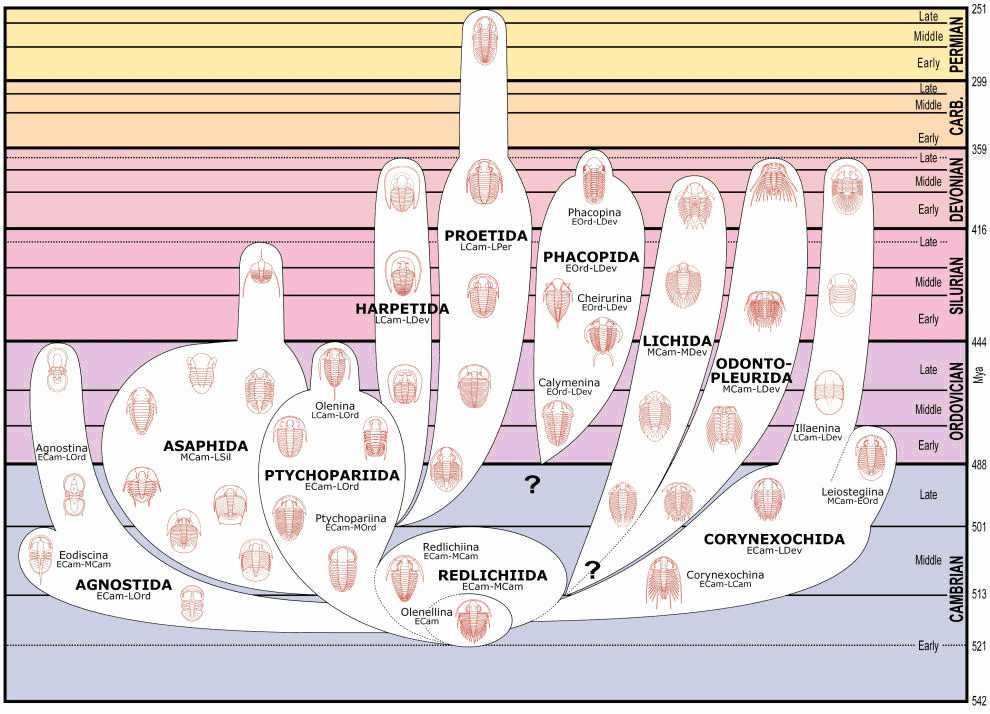
Like most all fossils, trilobites are found through many layers with very minor differences that caused them to be categorized as different species--but they are still trilobites.
One reason that this claim sounds foreign (and probably wrong) is partly because of presentation. Naturalists focus on defending their theory at all times– especially within the production and categorization of data. They know that pointing out that most all animals remain in stasis for millions of years does not reflect well on evolution.
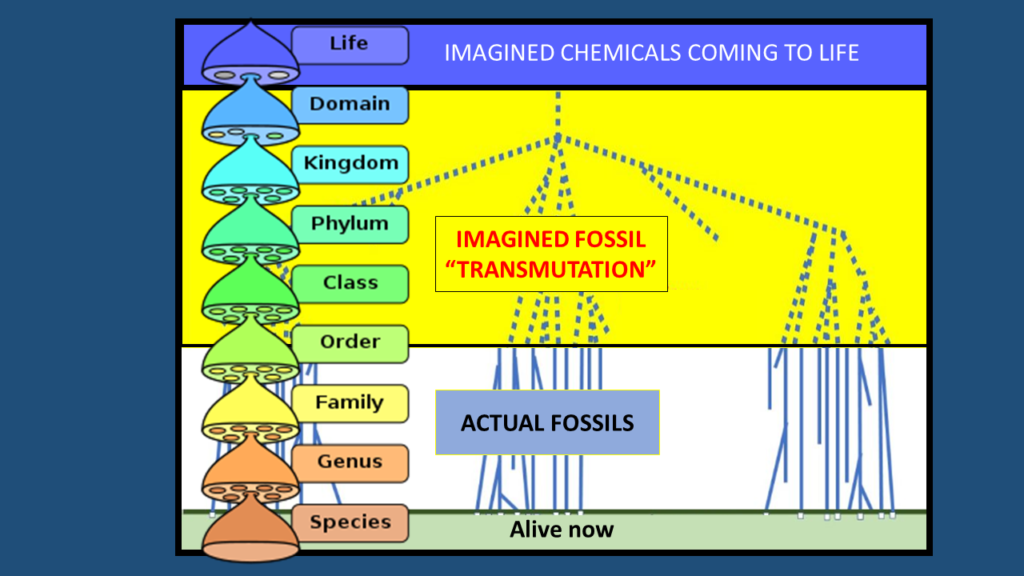
Organisms are categorized today in various ways; one method is called cladistics. For fossils, this leaves researchers with potentially three bodies of physical evidence: {1} the anatomical form, {2} the sedimentary layer it was found, and {3} perhaps some fragments of DNA. DNA was shockingly found within fossils. Any fossil presumed to be over 100,000 has nothing close to a fully mapped DNA– only fragments. This is because of DNA’s vast fragility, with only a 521-year half-life, four times younger than carbon-14! -1.

One reported radiocarbon in a supposedly 70 million-year-old mosasaur fossil from Belgium, and the other reported radiocarbon in a supposedly 505 million-year-old sponge from Canada’s famous Burgess Shale. Their authors suggested contamination, but neither study presented scientific evidence to support this assertion.”
https://www.icr.org/article/carbon-dating-fossils
Determining that rate (of genetic change) has been difficult because it is rare to find large sets of DNA-containing fossils with which to make meaningful comparisons (comparisions to modern DNA). To make matters worse, variable environmental conditions such as temperature, degree of microbial attack and oxygenation alter the speed of the decay process (make for an even a quicker decay rate).”
DNA has a 521-year half-life | Nature Paranthesis and bold are mine.
The internet and textbooks are filled with drawings of a supposed ancient past when seemingly only mysterious (and now extinct) creatures lived. They do this despite physical evidence that many of these strata of marine and tropical environments are also filled with ordinary creatures. Why leave those out? Notice that this Jurrasic image does not include fish, crabs, shrimp, clams, squid, starfish, sea lilies, turtles, or sharks– and they all had “evolved” by then. These greatly exaggerated ancient oceans were perhaps not unlike our oceans today. Yet, evolutionary textbooks and website focus on only extinct organisms–why?
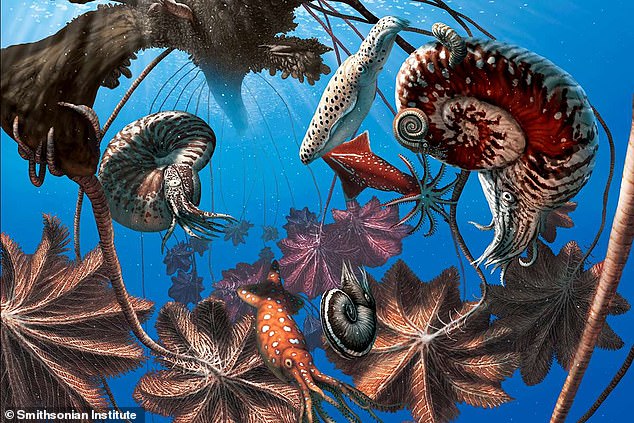
The term “living fossil” is an imperfect concept, which has caused much consternation among paleontologists and biologists as they have sifted through the fossil record over time. It is meant to describe an organism that has remained relatively unchanged over millions of years, or one that has no, or very few, close surviving relatives. The concept is an informal window into the past, a way for us to consider species as they may have been millions of years ago by observing their modern descendents.”
Living Fossils | Popular Science (popsci.com)
Many such life forms, evidenced by the fossil record, have remained virtually unchanged for millions of years. A few include (many fishes such as) The Coelacanth, Sharks, Crocodiles, Horseshoe Crabs, Fig Wasps, Ginkgo Biloba, Palau Cave Eels, and Nautilus.-2 The Coelacanth fish has been thought to be long extinct but was later found alive. Look at the horseshoe crab– back to the distant Cambrian layer (541 million years ago), yet they are still in stasis. Isn’t the concept of the descent of life by evolution the opposite of what we observe within the preponderance of the evidence?
Ordinary extant animals and organisms also found as fossils remain a significant challenge for the theory of evolution. The idea of evolution is that the needs of living things change for countless reasons, and therefore the living organisms must change (evolve) to survive. But this is not what we observe. Why are fossilized lifeforms still alive today, essentially unchanged in stasis?
Living fossils are a problem for evolution despite claims or saves to the contrary. Many Naturalists do not like this concept, let alone the evidence presented herein. The evidence and inferences discussed and illustrated within this article illustrate a minimization and even some outright omissions within most naturalistic publications relating fossils types to modern living species.
“Evolutionists like to call it ‘evolutionary stasis’ (when one organism does not change for millions of years). But evolution is about change, and putting ‘evolutionary’ in front of ‘stasis’ does not explain stasis in terms of evolution.” These are contradictions.
Dodging living fossils (creation.com)
The naturalistic categorization is carefully organized as NOT to find many “living fossils”. Why? Evidence of fossils and life today reveals a remarkable stasis in all life forms. While stasis alone does not disprove the theory for universal common ancestry (“evolution”), the physical evidence weakens it.
We have found that “living fossils” are deemphasized by a laundry list of criteria needed to qualify within their preset demarcations and assumptions to earn the categorization of being a “living fossil.” Also, naming these fossils involves complicated Latin scientific names as a norm, making identifying the type of organism more difficult. Finally, fossils illustrated in artistic renderings are the extinct or most mysterious appealing life forms, which leaves the viewer believing the ancient oceans and terrestrial landscapes were much different than today. These renderings purposely leave out any ordinary animals regardless of that species’ predominance or quantity.
Living fossils: contentious but necessary? Whether it is horseshoe crabs, coelacanths, or gingko trees, taxa that allegedly display extraordinary levels of morphological stasis over geological time have called out for a special explanation since Darwin (Lidgard and Hopkins 2015).
https://academic.oup.com/bioscience/article/68/10/760/5065827
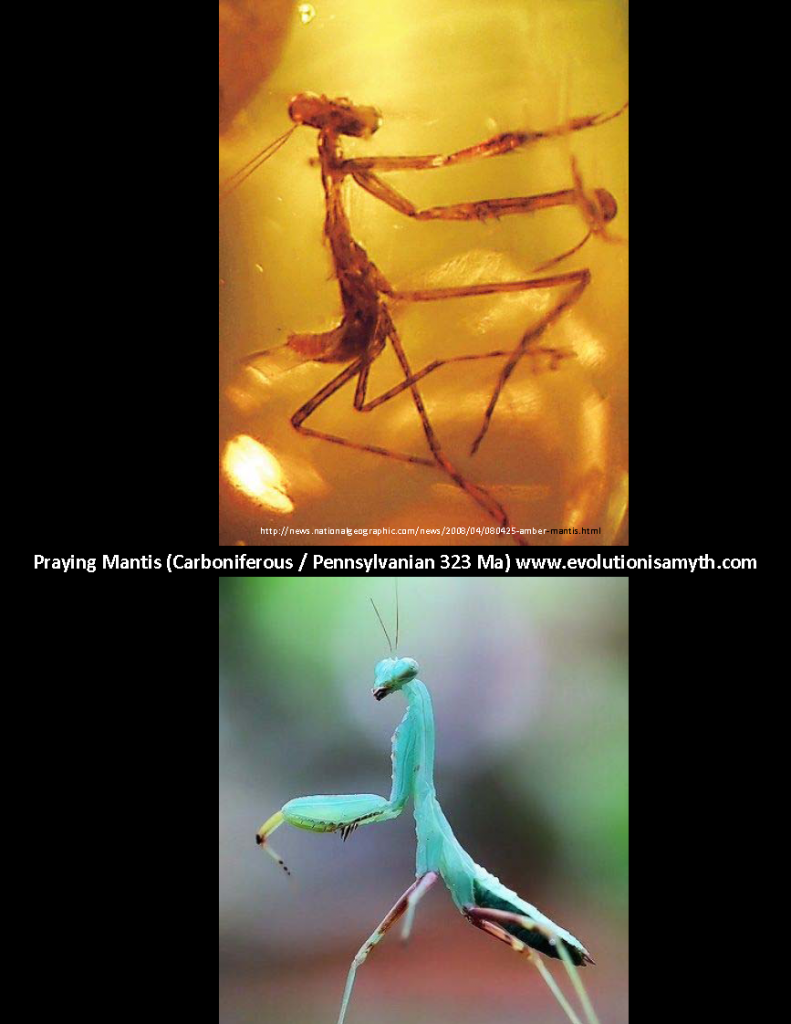
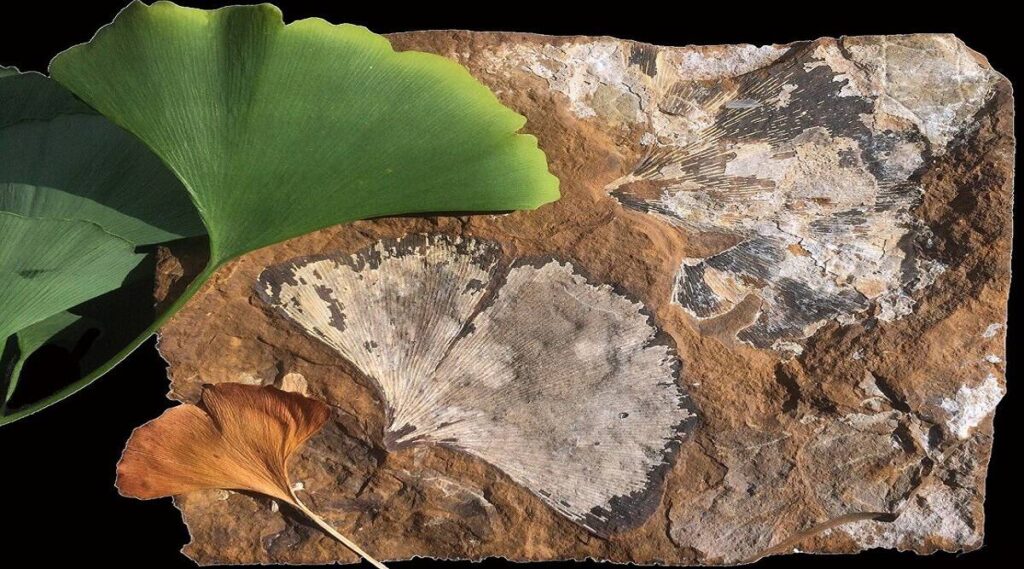
The Ginkgo biloba is a living fossil whose arboreal ancestors date back to the Jurassic period. Yale University paleobotanist Peter Crane said: “It is hard to imagine that these [ginkgo] trees, now towering above cars and commuters, grew up with the dinosaurs and have come down to us almost unchanged for 200 million years.”
https://creation.com/ginkgo-living-fossil
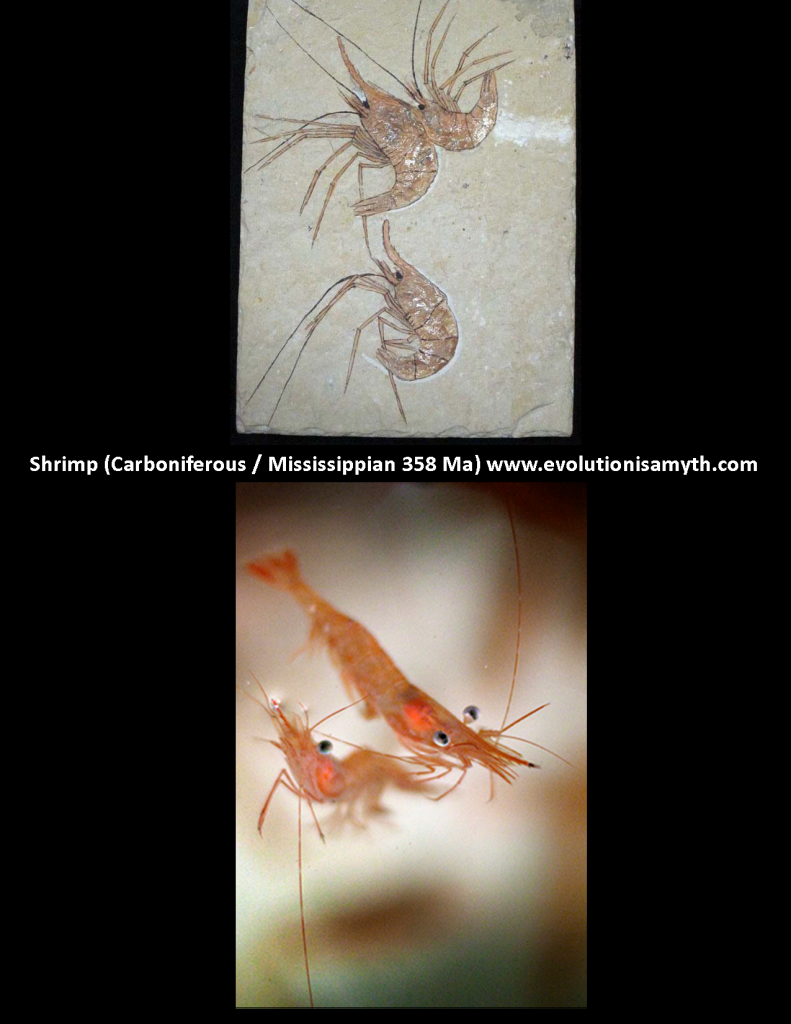
Shrimp found in the Carboniferous Oil Shales of Edinburgh, Scotland.-5
Viewing extinct and extant representatives of these lineages side by side provokes an immediate judgment of similarity…Why have these constellations of characters persisted for so long?”
https://academic.oup.com/bioscience/article/68/10/760/5065827
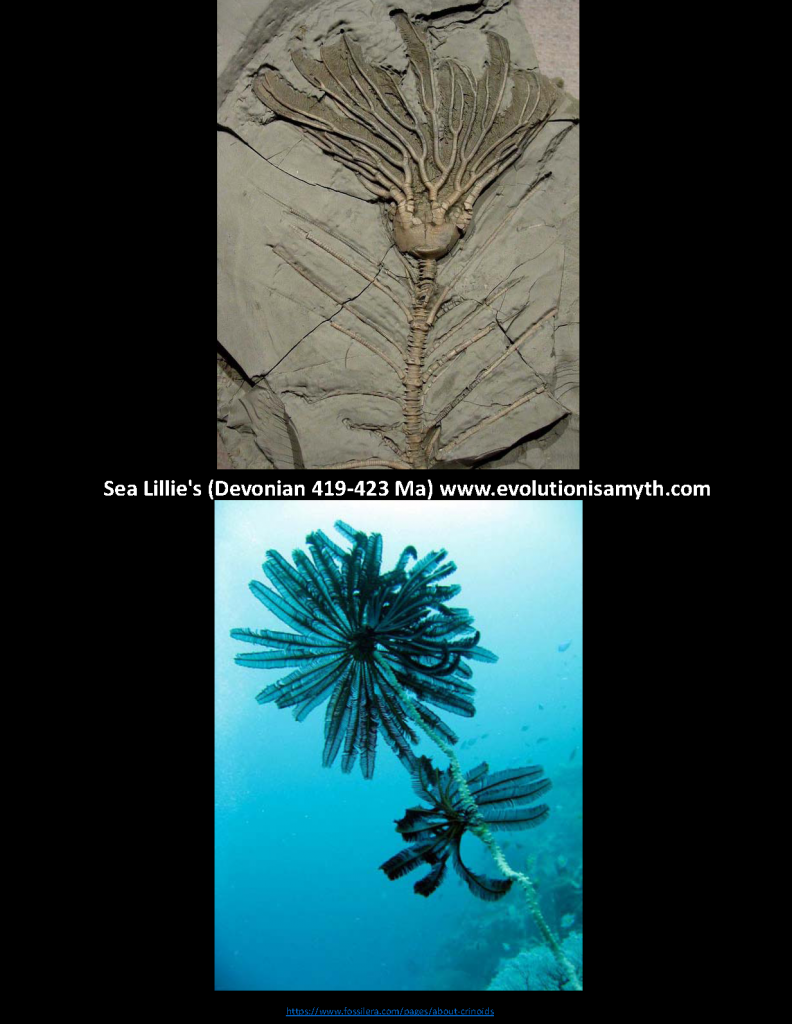
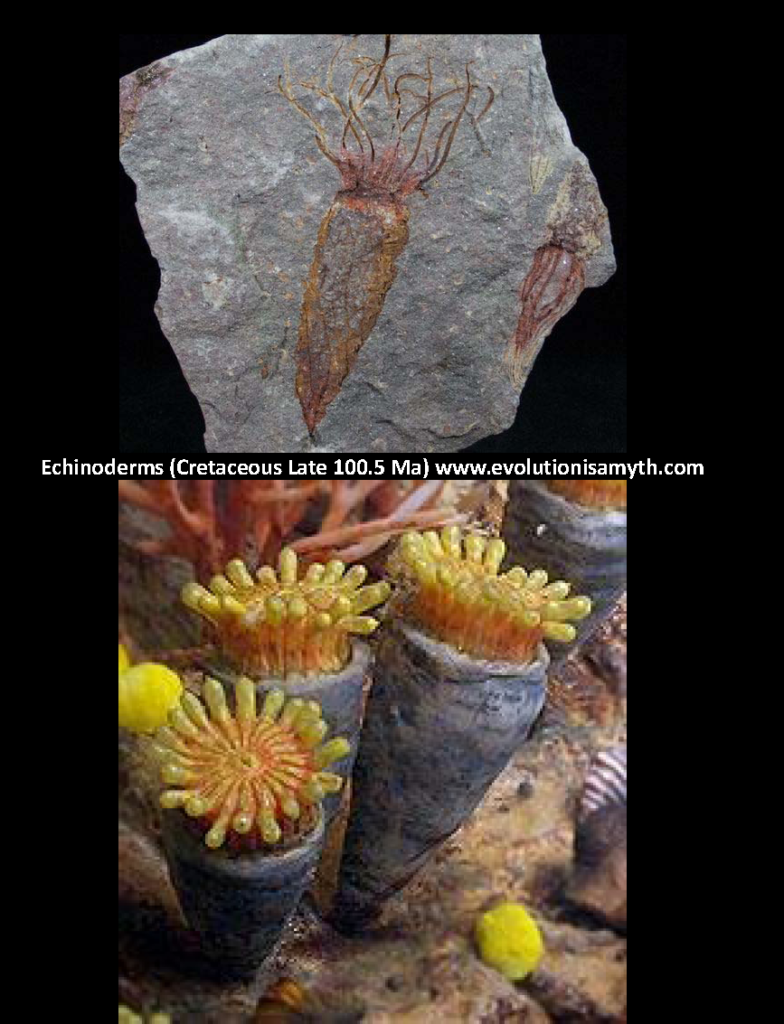
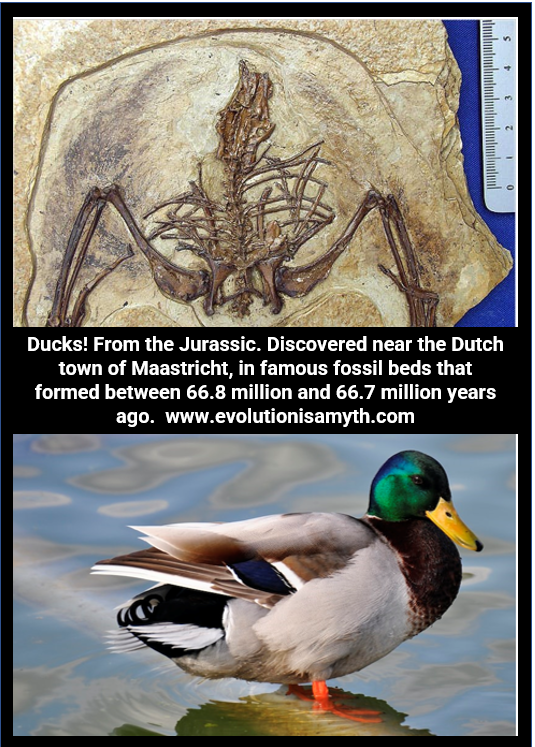
Many seemingly mysterious-looking marine animals found fossilized are also alive today in stasis–nearly identical to those thought to be hundreds of millions of years old.
Birds are the ancestors of dinosaurs? Strange because many birds lived along with dinosaurs, including chickens and ducks!
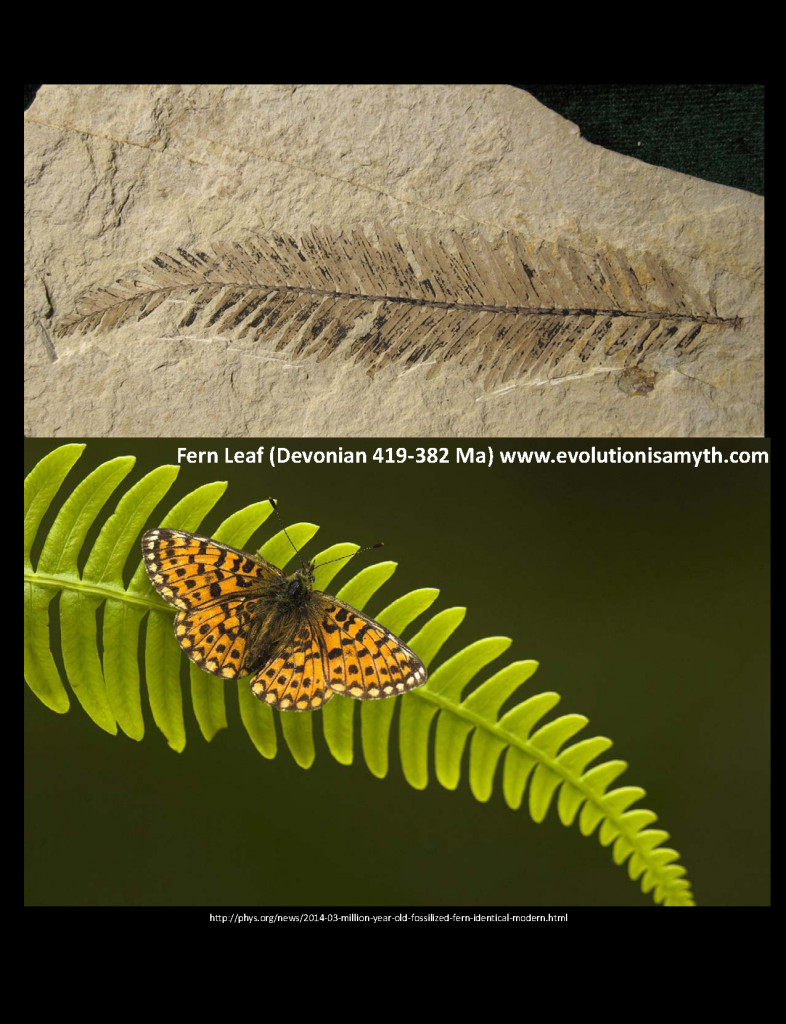
Our aim…is to rethink the concept of a living fossils in a way that takes seriously both its routine use across disparate research questions in biology and the worries about its misleading inferences (such as creationists use of such data) in order to create new paths for productive research that yield a more unified theoretical outlook. We first highlight the value of thinking in terms of parts (characters) and wholes (typically, organisms or lineages) to better understand stasis. Then, we move beyond concerns that concentrate on categorizing living fossils.” Parentheis in orginal.
https://academic.oup.com/bioscience/article/68/10/760/5065827
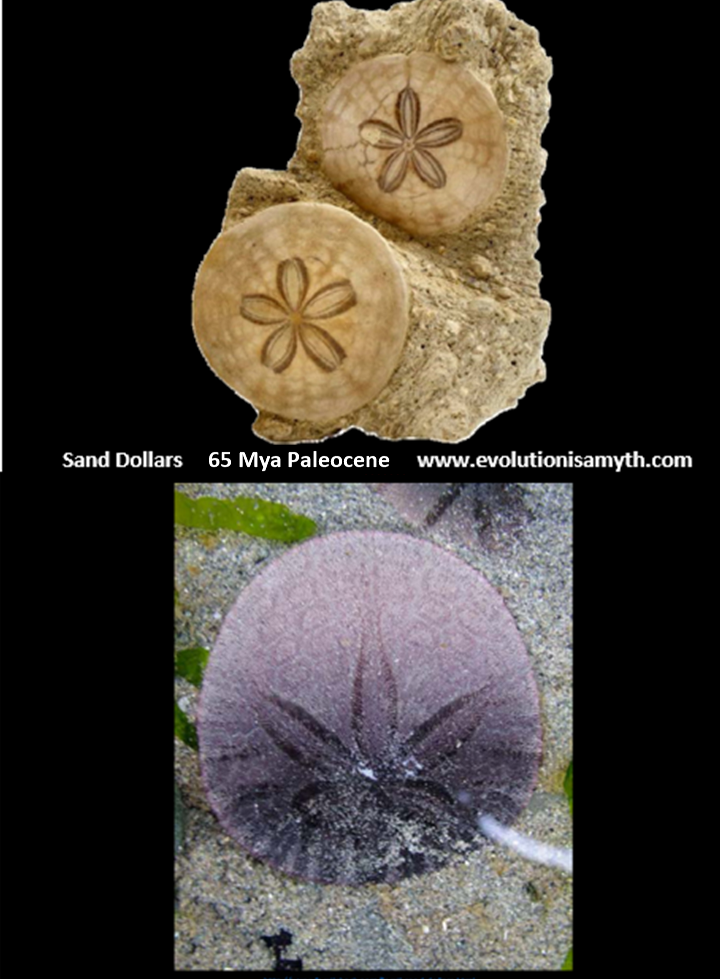
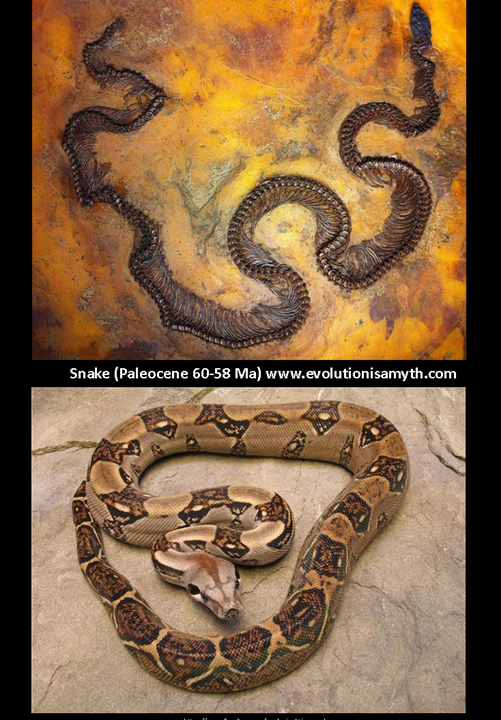
Yet, Stephen J Gould—the now-deceased professor of paleontology from Harvard University and the American Museum, is hard to contradict when they say there are no transitional fossils. … “You say I should at least show a photo of the fossil from which each type of organism was derived. I will lay it on the line—there is no such fossil for which one could make a watertight argument.” [Italics and bold added]. -3
What needs to be specified (is) to understand how the living fossil concept plays the role of delineating what is in need of explanation and structuring a research program around different factors that are associated with long-term stasis“
https://academic.oup.com/bioscience/article/68/10/760/5065827
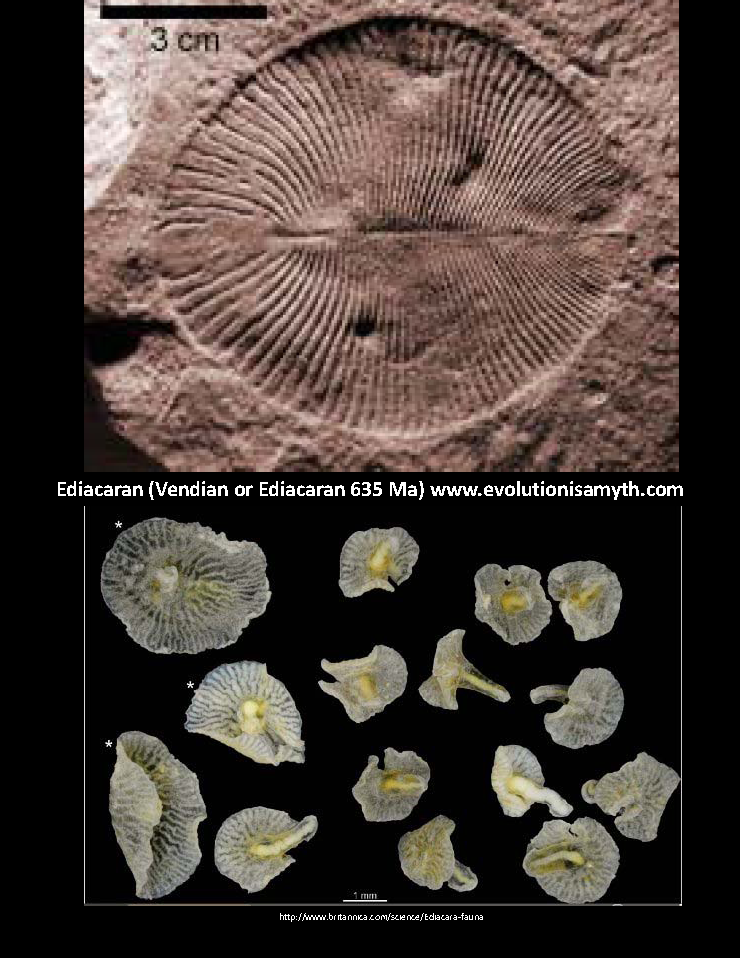
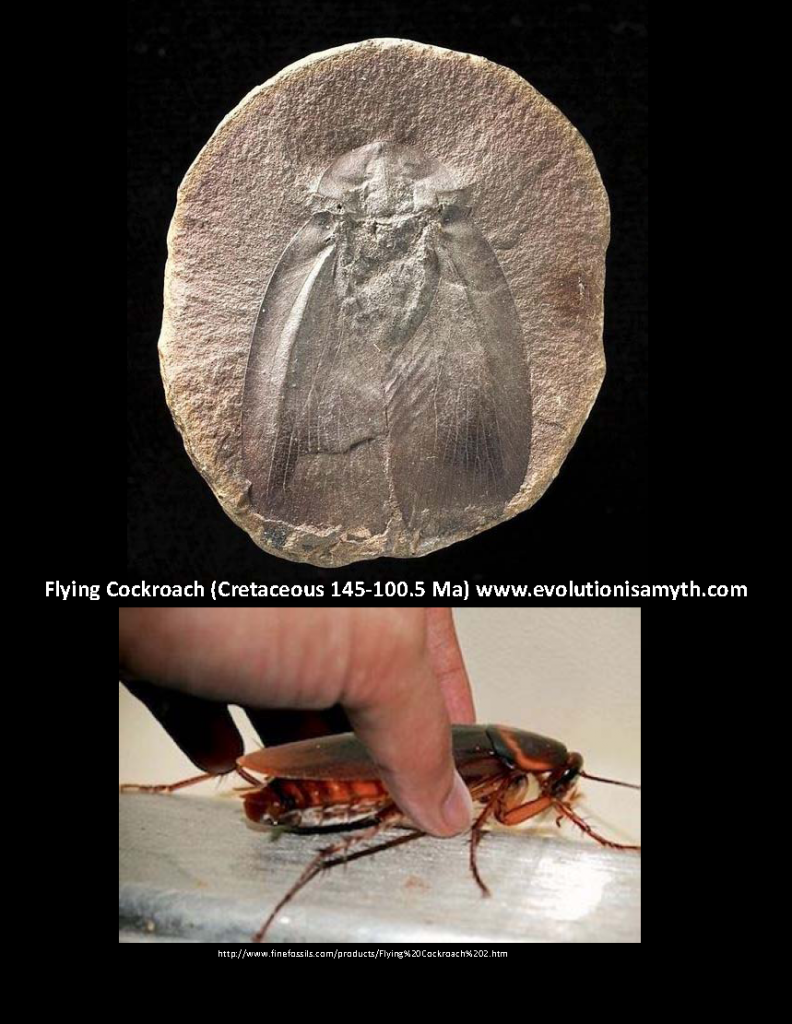
Should we expect very long-lived lineages to be common or rare, morphologically distant or average compared to related lineages?”
https://academic.oup.com/bioscience/article/68/10/760/5065827
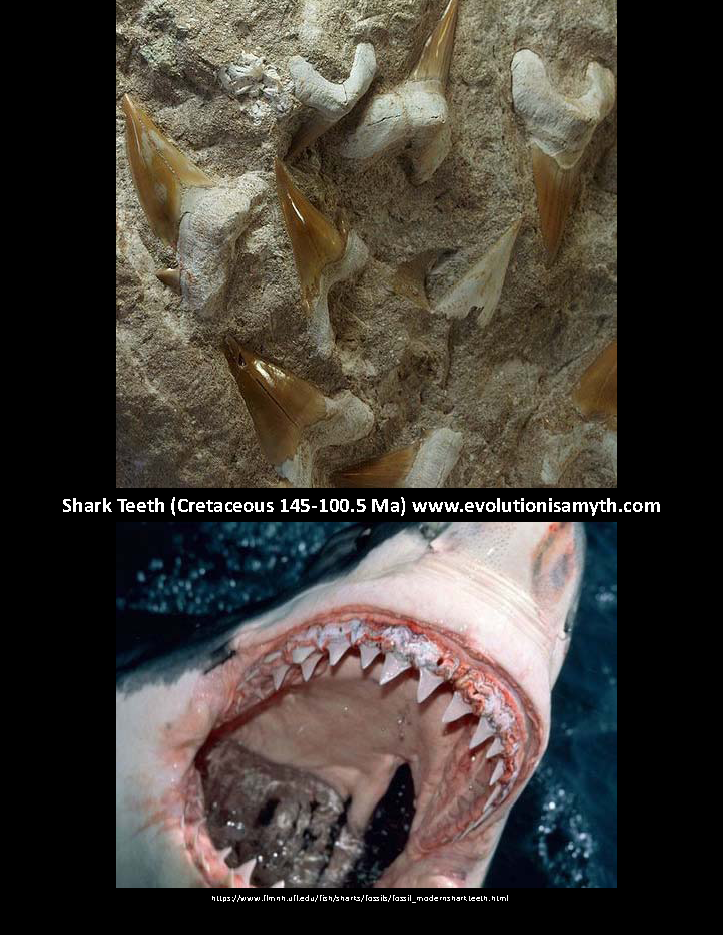
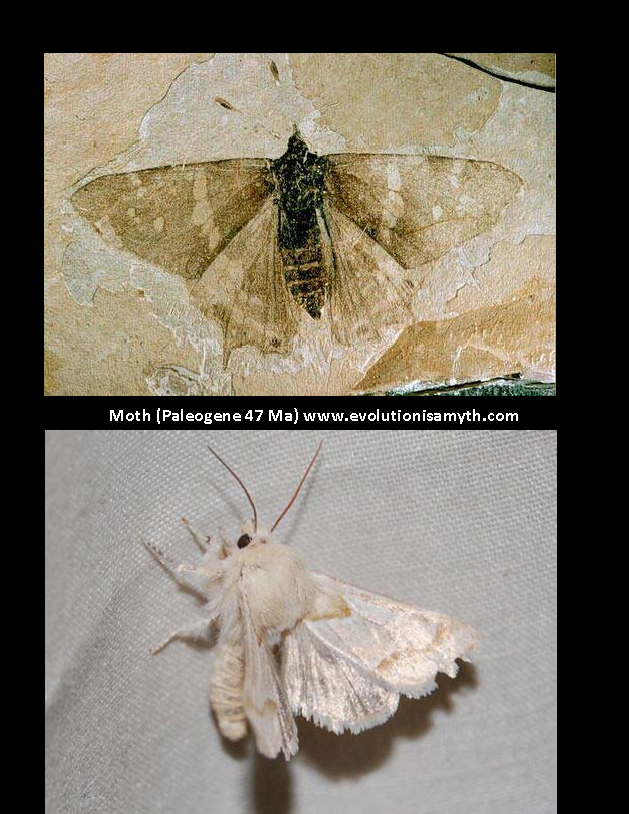
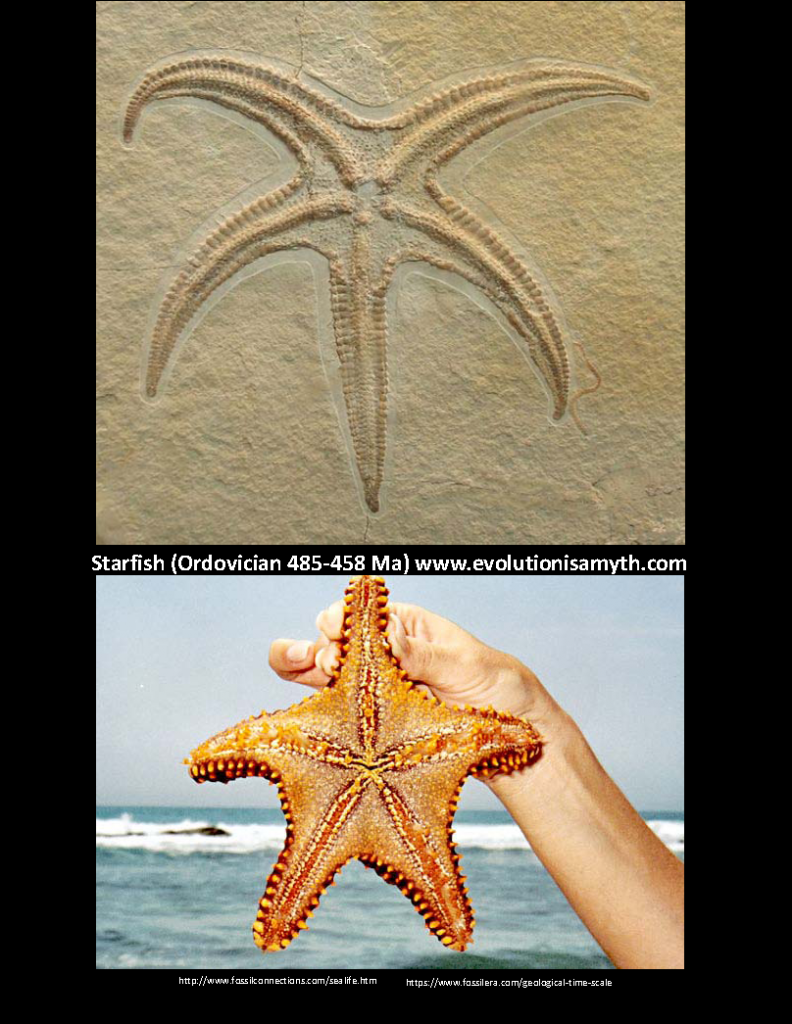
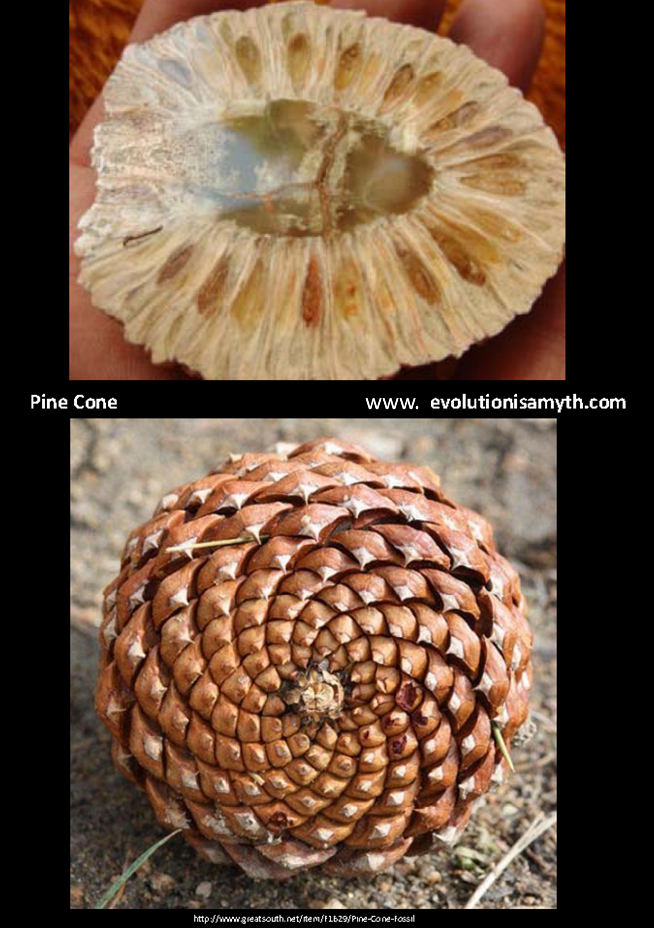
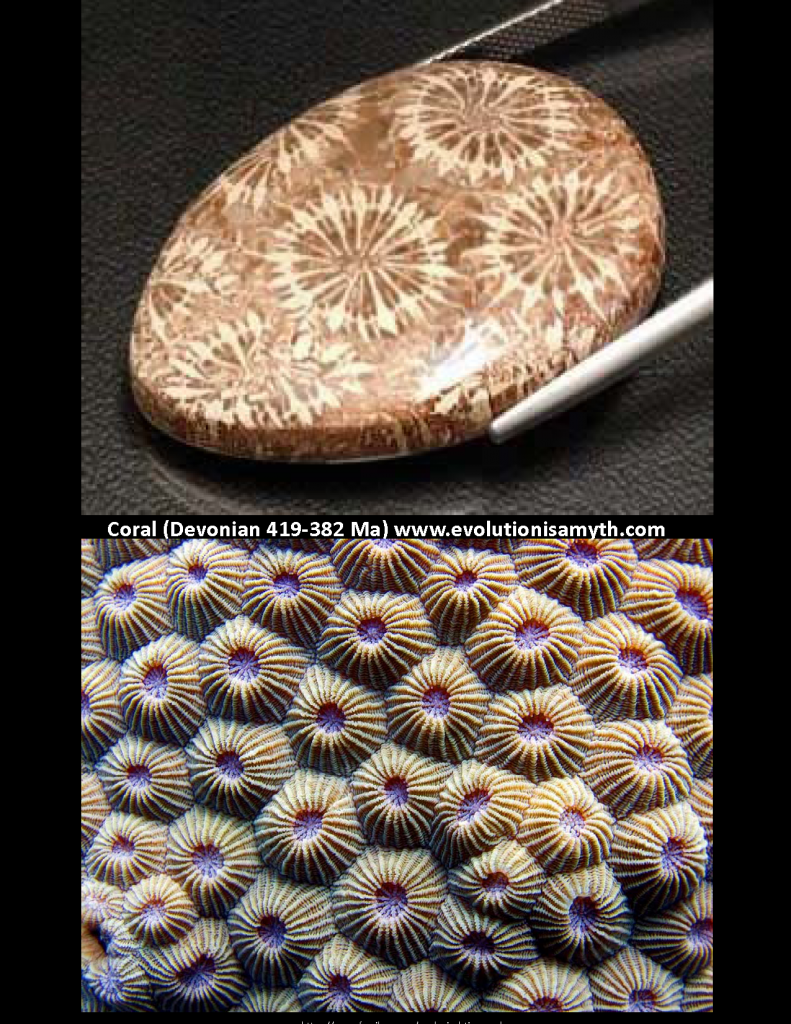


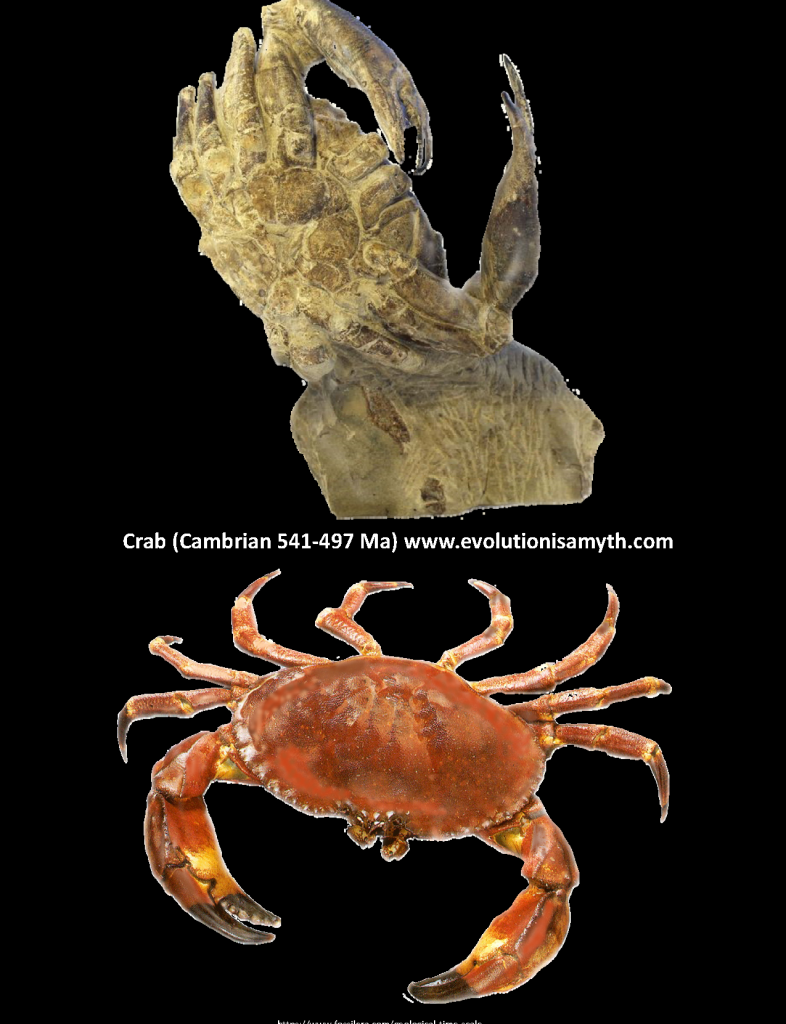
In summary, different disciplinary perspectives, data, and methods can be integrated within an organized structure of problems to achieve more comprehensive and unified answers to questions about slow or negligible rates of evolutionary change—stasis—for diverse kinds of parts and wholes in living systems.”
https://academic.oup.com/bioscience/article/68/10/760/5065827
Sources:
1- DNA has a 521-year half-life | Nature
2- 12 of the most astounding ‘living fossils’ known to science (gizmodo.com)
3- Sunderland, L., Darwin’s Enigma, Master Books, Arkansas, USA, pp. 101–102, 1998. Patterson’s letter was written in 1979.
4- Image Disclaimer: The fossil pictured does not necessarily represent the specific living specimen, but they are the same type or kind of animal (like a turtle, crab, etc.). The fossil layer dated on the image indicates the oldest known fossil layer it has been found. Like all life, minor variations persist even into the modern day, but it does not make a crab anything different than a crab.
5- https://www.fossilera.com/fossils/6-7-plate-of-carboniferous-shrimp-waterstonella-scotland#:~:text=This%20is%20a%20cluster%20of,the%20dark%20grey%2Dblack%20rock.
6-The claim here that ammonites are modern nautilus is solely the author’s opinion. https://sciencing.com/seashell-characteristics-8319649.html

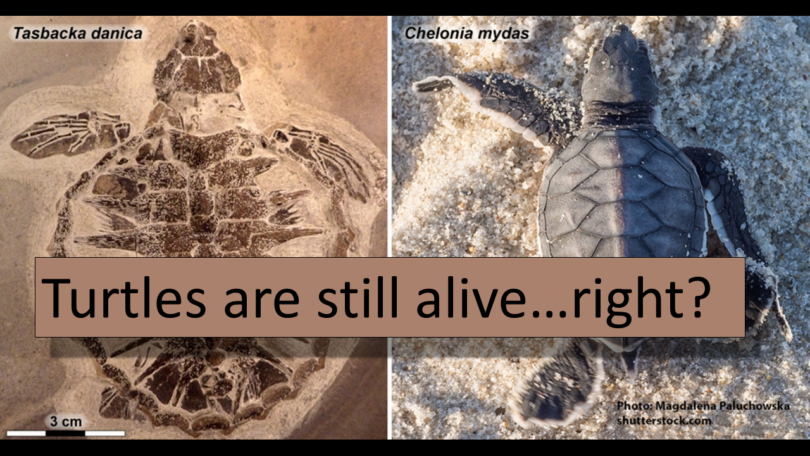

[…] living fossils for more information on fossils still alive and well […]
[…] layers of the Cambrian where animals such as the horseshoe crab which is alive and well today as a living fossil: still relatively […]